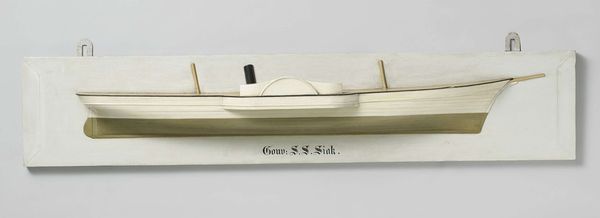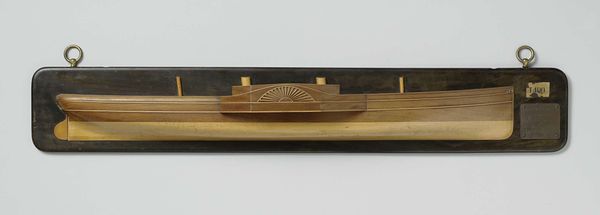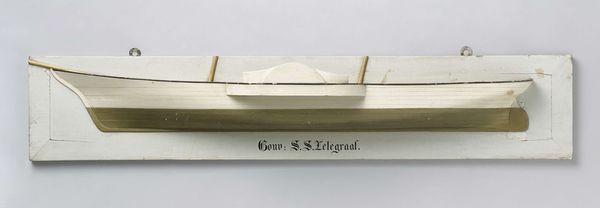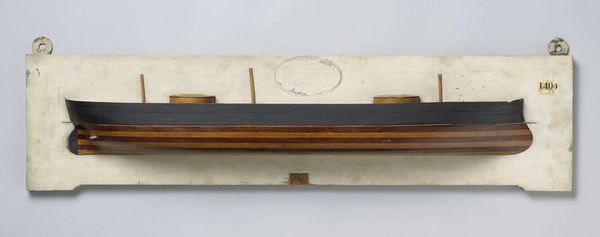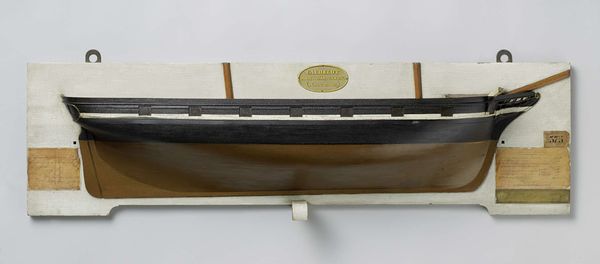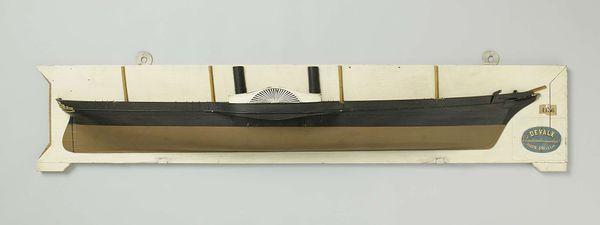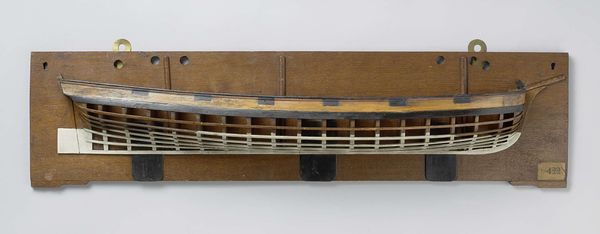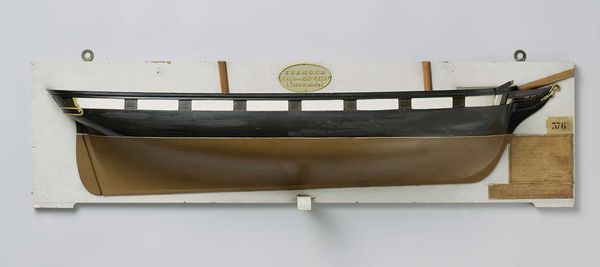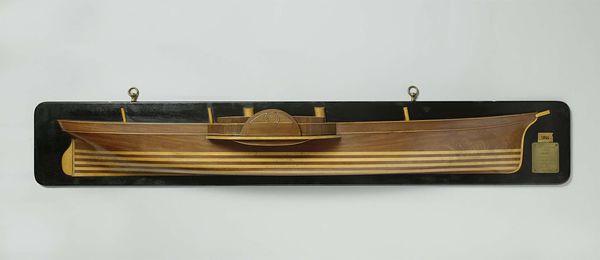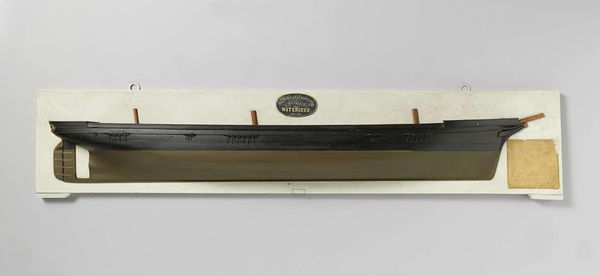
sculpture, wood
#
sculpture
#
wood
Dimensions: height 17 cm, width 130.5 cm, depth 16 cm
Copyright: Rijks Museum: Open Domain
Curator: This is a "Half Model of a Paddle Steamer" created around 1862. It is attributed to Bögel & Dunlop Nering and fashioned from wood. The profile captures the clean lines of this maritime craft, but something about the color story feels melancholic. Editor: Melancholic? The simple geometry of the hull against the flat back panel establishes an almost architectural formality. Notice how the waterline, subtly indicated in a darker tone, creates a definitive horizontal that stabilizes the entire composition. Curator: But the vessel itself implies journeys, trade routes, possibly colonial enterprises—consider what those might have entailed in 1862. Who benefitted? Who was exploited? I find a weight of implication beneath those deceptively serene surfaces. Editor: Context, of course, shapes our readings, but focusing solely on such extrinsic aspects can obscure the fundamental design. The elegance in the tapering lines towards the bow speaks volumes. And it also features interesting construction marks which highlight the processes of creation! Curator: Process is fascinating, indeed, though it inevitably connects to the human hands involved and therefore the socio-economic systems that gave them employment. Did the hands building this model labor under equitable conditions? What resources were devoted? Editor: I can see that there is lettering included at the bottom "Gouv. S.S. Brombeek" and from there we can look at who was using the boat, perhaps the historical specifics will help provide the social-political picture of the context, to give us better perspective on it, don't you think? Curator: I absolutely agree! This approach reminds me of work being done at The National Maritime Museum Cornwall by Katie Bell where research focuses on expanding narratives by questioning if museums have amplified dominant voices, thus reinforcing power imbalances, while overshadowing valuable alternative perspectives. Editor: So you are advocating an approach that actively reconsiders the positionality of museums... And by extension objects held by museums! Thank you. It sounds like further inquiry will be very enlightening. Curator: I found the design simplicity to be a clever mask to further think about complexity! It serves as a reminder to critically reassess and rewrite those aspects which are not known about vessels.
Comments
No comments
Be the first to comment and join the conversation on the ultimate creative platform.
